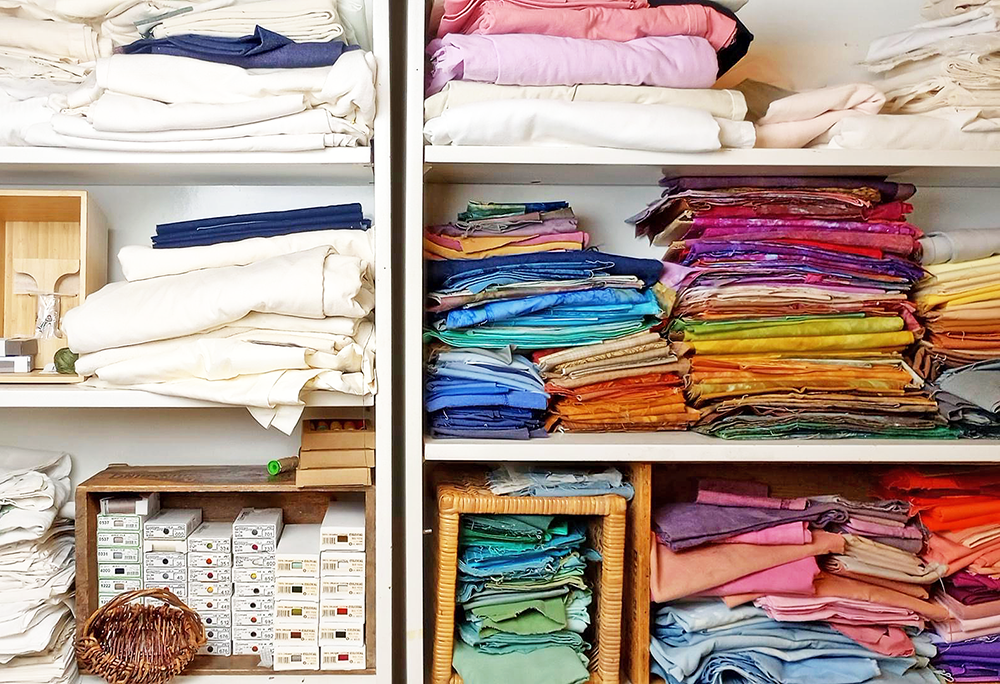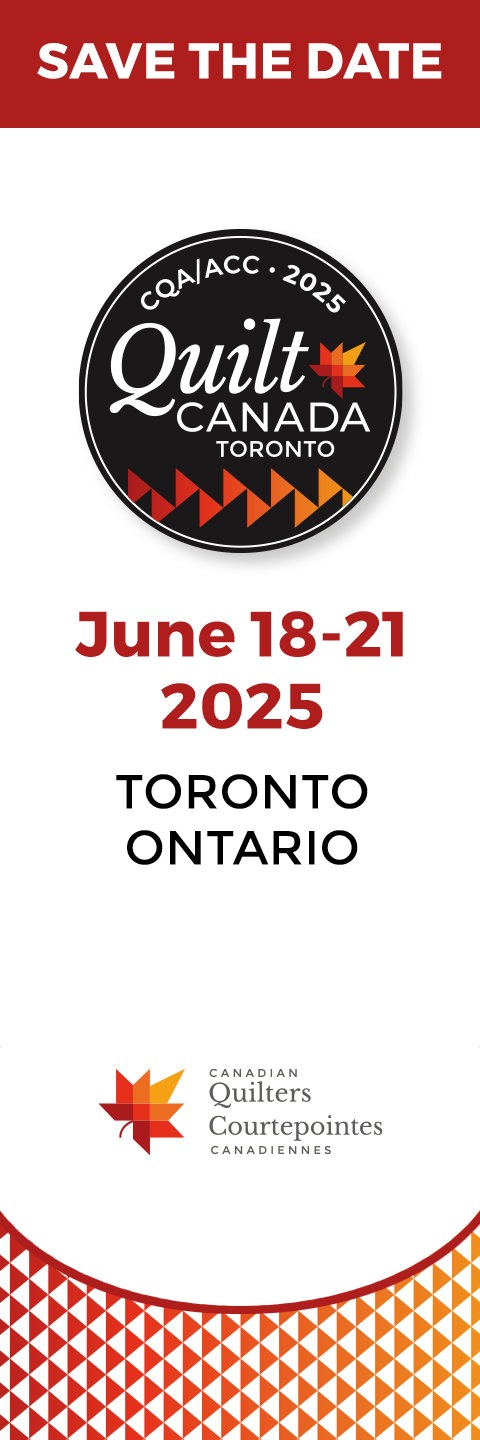SOCIAL SUSTAINABILITY
In the ever-evolving textile world, a transformative movement is gaining momentum—a shift towards mindful practices that encompass slow stitching, custom work, zero-waste approaches, scrap quilting, upcycling, repurposing, and bespoke projects. While often considered alternative and fringe, this movement is undeniably growing, reflecting a collective desire to simplify amidst the complex systems that define our daily lives.
The pace at which we live, fueled by the remnants of the industrial revolution, has reached an unsustainable crescendo. The perpetual need to produce, to accumulate, has left many feeling fatigued and detached from the precious moments that define a meaningful existence. In response, a growing number of individuals in the textile community are advocating for a return to simplicity, not only for the sake of our planet, but also for our individual well-being.
One crucial pillar of sustainability in this textile context is the social aspect, focusing on individuals—ourselves, the textile community, and our local communities. To achieve true sustainability, a delicate balance between People, Profit, and Planet must be maintained. Our well-being, both individually and collectively, serves as the foundation for a sustainable future.
Textiles are such an integral part of our lives and hold a universal connection. We do not go through a day without interacting with textiles in some way. They evoke nostalgia, comfort, and memories, often transporting us to our childhoods. Many of us have a familial history with textile crafts—sewing, quilting, knitting—that elicits fond recollections. This universal and emotionally-charged connection is why textile practices should be approached with conscious intention, forming the bedrock of mindful textile practices.
For those already immersed in textile practices, like myself with more than 30 years of experience, the journey toward sustainability involves reevaluating our existing materials. It requires a shift in perspective without harbouring guilt for decisions made in a different mindset. The first step involves taking stock of one’s stash. I’ve been wrestling with this notion for some time and this year I decided to look at my own stash and share my process.
This is where kindness and setting aside judgement comes in. How do we step off the path we have been on and alter the trajectory, while still honouring our previous selves when we may have made different decisions?
We could consider our previous purchases using the idea of value…sentimental, emotional, financial, and practical values. You may find that some materials actually have no value at all to you anymore.
My first recommendation is to take stock of what you have, and use this opportunity to purge some of your materials and supplies that you know will not serve you going forward.
DID YOU KNOW? Only about 30% of all textile donations (primarily clothing) make it to the floor at reuse centres.
SORT YOUR STASH
I decided to divide my stash into three categories. First is the coveted section, materials that have sentimental and emotional value, with stories to them. I have a set of silk curtains that hung in the house my family lived in for many years. They belonged to the original owners and are likely over 100 years old. They feel luscious and I love their history. I have no idea what I will make with them, but I will keep them until I figure that out; they stay in category one.
I have several other pieces like this that bring me so much joy just knowing a potential project exists. These kinds of fabrics feed our souls and are valuable assets in our collections.
The next category is fabrics that have financial and/or practical value. I know I will use them in future projects. This changes for me over the years as new materials come into my stash; I look at my stash with the goals I have today.
The third category is material with no value to me anymore, where I know I will not use the fabrics. I am given materials all the time (so grateful!) and many of them are not really my jam. I set these aside and look for ways to pass them along.
There are several things you can do with these materials that will still support sustainable practices. If you’re not in a position to give them away, you can sell them. There are destash groups on Facebook, and there are online stores that sell your previously purchased (cut but not used) materials, like Feel Good Fibers Inc. You can give them to a friend who will love and use them, or maybe you are part of a stitching group or quilt guild that does swaps. You can donate them to textile reuse centres like Our Social Fabric, or find your local textile recycling centre.
A last resort is a general re-use centre. I say last resort because often fabric yardage is not put onto the floor at these centres, especially if it is small scraps. Side note: Only about 30% of all textile donations (primarily clothing) make it to the floor at reuse centres like Value Village. The remainder is sent to textile recycling centres where materials and clothing are sorted, bundled, and shipped overseas to countries that cannot manage the influx of textiles, creating some of the largest landfills filled with textiles, polluting land and water in these regions.
We can look at our unfinished projects in the same way and sort them into three priority categories as well. The first includes the ones we absolutely intend to complete this year. These projects often have great meaning behind them, they are for someone we care deeply about, or they are feeding our creative journey.
The next is the hopeful or meaningful category; some projects we may never finish, but are a testament to our journey, and there is nothing wrong with revisiting those and not finishing them.
The last category is for the ones that got away. Sometimes we save projects with the idea that we will get to them eventually, we feel guilty that we started them, or we messed up along the way, ran out of the fabric, and we are now uninspired by them. I think we need to forgive ourselves for this, because it can be a burden on our mental health; sometimes it serves us better to let that go.
There are people out there looking for partially-finished projects. You may be so surprised by what they can create from your foundation. You can also deconstruct these works and add the materials to your scrap stash.
This practice of inventorying one’s studio may seem time-consuming, but it establishes a profound connection with materials and the stories they hold. It not only provides a clear picture of available resources, but also prevents mindless purchasing, promoting a more intentional and sustainable approach.
This practice of inventorying one’s studio may seem time-consuming, but it establishes a profound connection with materials and the stories they hold.
CLEAR YOUR STASH, CLEAR YOUR MIND
Dispelling the notion that “whoever dies with the most fabric wins” is essential in this journey towards sustainability. Excessive fabric, though momentarily pleasurable to acquire, can actually lead to stress and anxiety for many. The rush we get when acquiring new materials is fleeting, and the burden of excess can ultimately stifle creativity. This issue has created anxiety for me when an unorganized studio and unused fabric have hindered my creative endeavors, making the weight of excess materials detrimental to my mental health.
Embracing mindful textile practices is not only about contributing to environmental sustainability, but also nurturing our individual well-being. By slowing down, evaluating our existing materials, and engaging in intentional creativity, we foster a sense of connection with our craft. Let’s dispel the myth of excess as a measure of success and instead find fulfillment in purposeful, sustainable textile practices.
 Bridget O’Flaherty is a Canadian free-motion embroiderer, quilter and textile artist, teacher, speaker and podcaster with a decade of experience in the sustainable building industry. Known as The Sustainable Quilter, she shares her passion for the natural environment in her art and online community.
Bridget O’Flaherty is a Canadian free-motion embroiderer, quilter and textile artist, teacher, speaker and podcaster with a decade of experience in the sustainable building industry. Known as The Sustainable Quilter, she shares her passion for the natural environment in her art and online community.
bridgetoflaherty.com
bridgetoflaherty.com/threads-of-sustainability-podcast/
@bridgetoflahertytextiles


